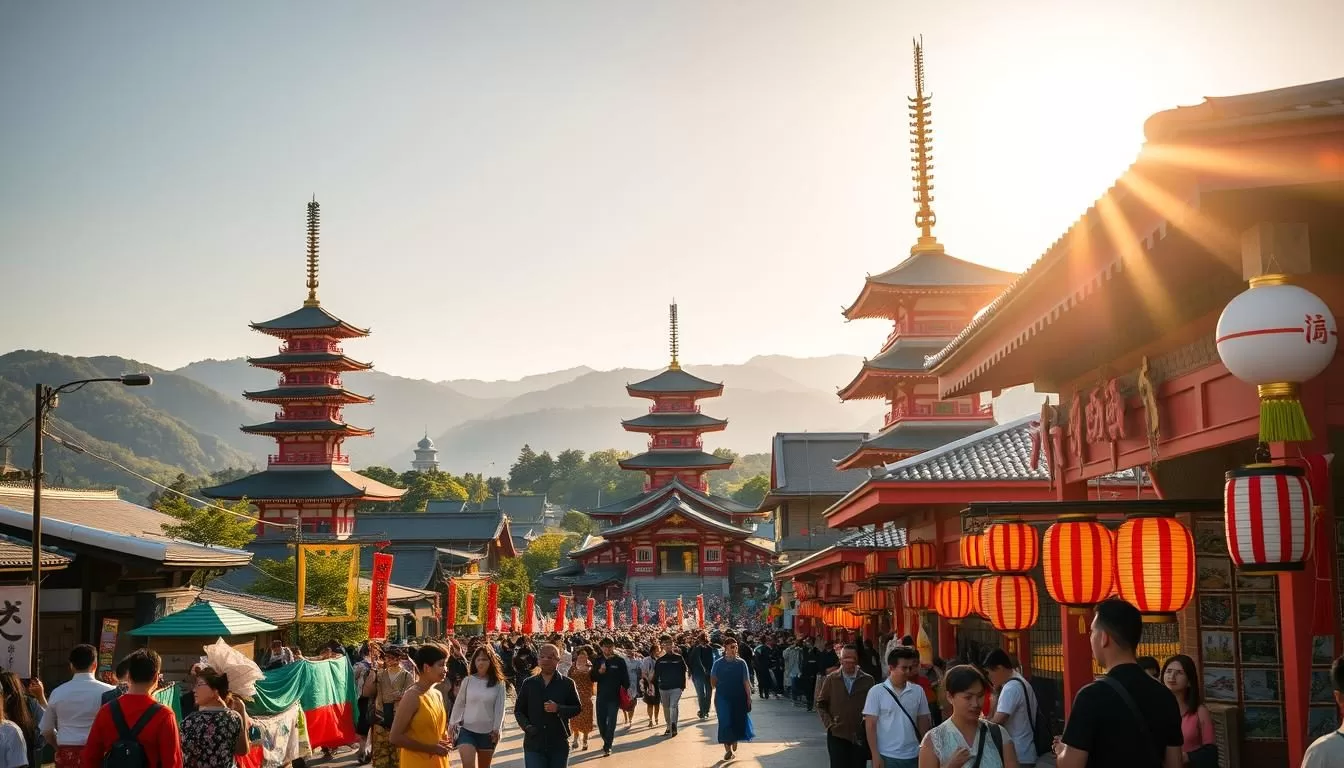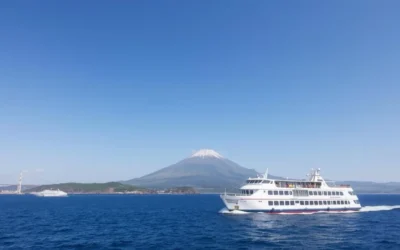✓ Accommodations✓ Flights✓ Rental Cars
Are you ready to experience the authentic heart of Japanese celebration? Shimane Prefecture is a hidden gem in western Japan that offers a unique blend of cultural festivals, historic sites, and breathtaking natural beauty.
From the grandeur of Izumo Taisha Grand Shrine to the serene landscapes of the Oki Islands, Shimane Prefecture is a traveler’s paradise. Throughout the year, the region comes alive with vibrant festivals that showcase local customs, spirituality, and artistic expressions.
Whether you’re planning a dedicated festival trip or looking to incorporate cultural events into your broader itinerary, this guide will introduce you to the most significant and captivating celebrations in Shimane Prefecture.
Discovering Shimane Prefecture: Japan’s Hidden Gem
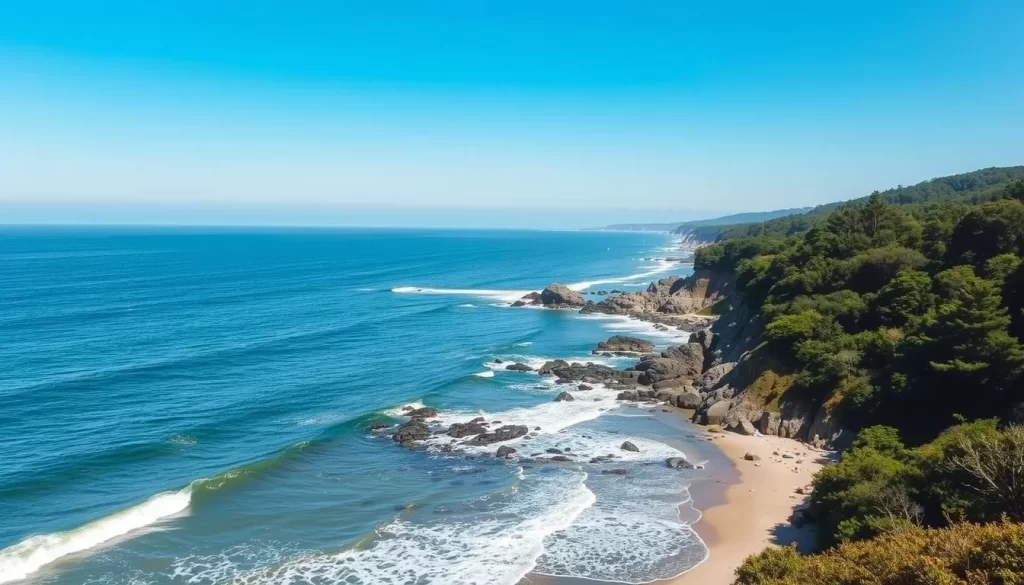
Tucked away in western Japan, Shimane Prefecture is a hidden gem worth exploring. As you venture into this captivating region, you’ll discover a perfect blend of natural beauty and cultural richness.
Location and Geography
Shimane Prefecture is situated in the northern part of western Japan, stretching along the San-in coastline and bordering the Sea of Japan. The capital city, Matsue, serves as the gateway to exploring Shimane’s wonders.
The prefecture boasts a diverse landscape, from majestic mountains to scenic beaches. Its unique geography has shaped the local culture, with the Sea of Japan influencing coastal festivals and the mountainous terrain creating isolated communities with preserved ancient traditions.
- Shimane Prefecture stretches along Japan’s western coastline, offering a diverse landscape that remains largely undiscovered by international tourists.
- The region is home to Matsue, the castle town capital, which serves as a cultural hub and starting point for exploring the prefecture’s festivals and attractions.
- You’ll find Shimane positioned in the Chugoku region, bordered by Yamaguchi, Hiroshima, and Tottori prefectures, creating a unique cultural blend.
- The geography of Shimane has shaped its cultural development, with the Sea of Japan influencing coastal festivals and the mountainous terrain creating isolated communities.
- Understanding Shimane’s location helps you appreciate why it’s considered one of Japan’s most spiritually significant regions.
Matsue Suitoro: The Enchanting Water Lantern Festival
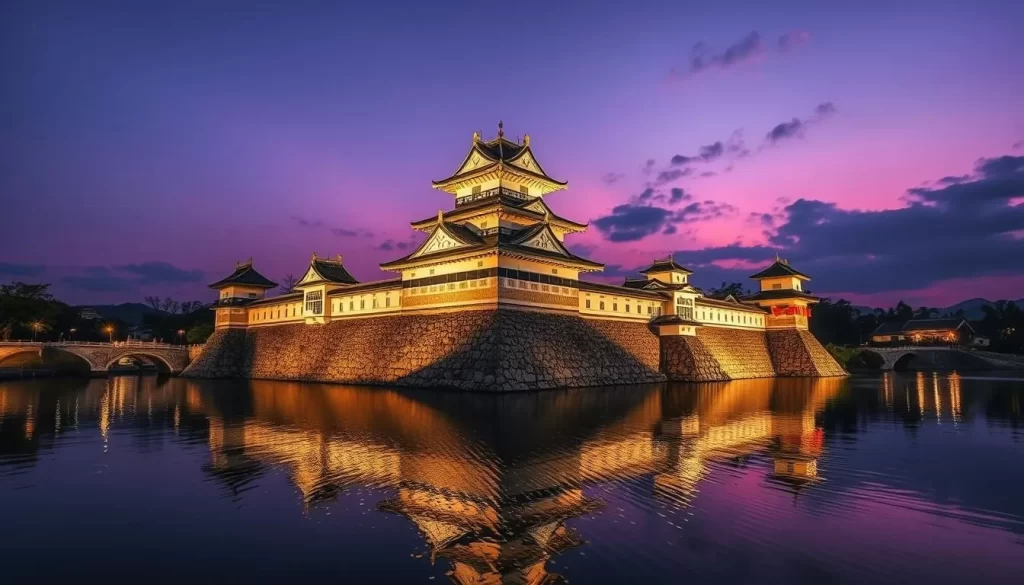
As the autumn leaves change colors, Matsue Suitoro transforms the historic castle town into a magical wonderland of light. Held on weekends and holidays from mid-September to mid-October, this enchanting festival is a celebration of local culture and creativity.
When and Where
Matsue Suitoro takes place around Matsue Castle and the adjacent historic street Shiomi Nawate. The festival grounds are decorated with dazzling lantern displays, creating a perfect setting where water reflects thousands of handcrafted lanterns. Visitors can enjoy the festival’s enchanting atmosphere, particularly at dusk when the lanterns are first lit.
The event has become a significant attraction in the area, drawing visitors from various regions. It’s an ideal time to visit Lake Shinji and explore the surrounding attractions, such as the Iwami Ginzan heritage site or the beautiful Oki Islands.
Matsue Dogyoretsu: The Thundering Drum Parade

As you visit Shimane Prefecture, make sure to witness the thunderous Matsue Dogyoretsu parade, a celebration that embodies the community spirit and rich cultural heritage of Matsue.
Festival Origins and Traditions
The Matsue Dogyoretsu festival has its roots in the Edo period (1603-1868), where locals would parade portable shrines through the city, accompanied by the rhythmic beats of taiko drums, flutes, and cymbals, praying for abundant harvests.
- Matsue Dogyoretsu showcases the thundering power of traditional taiko drums that have been part of the region’s cultural expression since the Edo period.
- The festival originated as a ritual to pray for good harvests, with locals parading portable shrines through the streets accompanied by drums, flutes, and cymbals.
- You’ll experience a tradition that evolved over centuries, becoming associated with imperial celebrations and serving as a source of consolation for the community.
Each neighborhood in Matsue maintains its own drums and ornate floats, passing down techniques and traditions through generations, creating a living link to the city’s past and preserving its cultural heritage.
Matsue Daichakai: The Grand Tea Ceremony
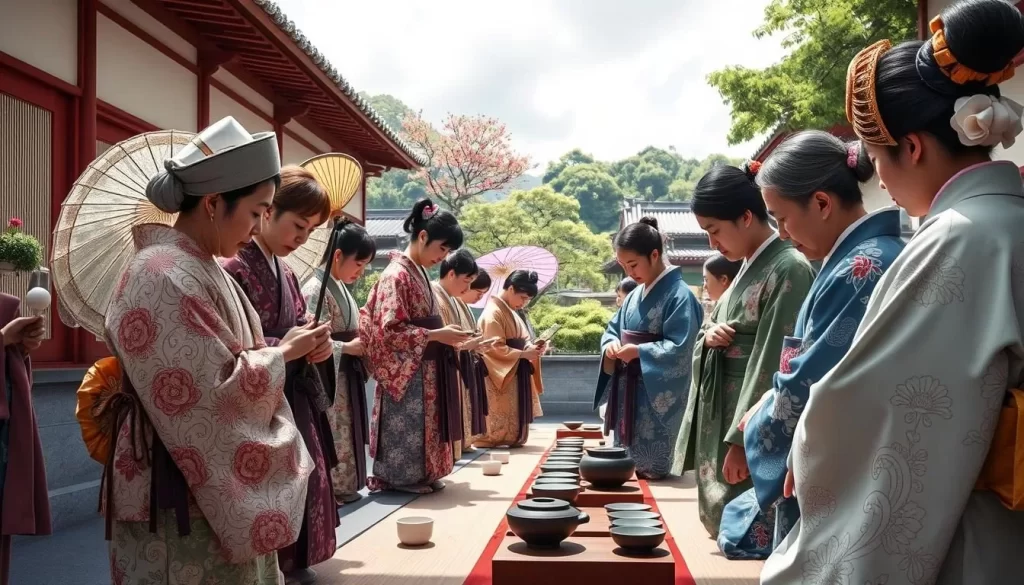
In the heart of Shimane Prefecture, Matsue hosts the Matsue Daichakai, a grand tea ceremony that embodies the region’s rich cultural heritage. This event is a testament to Matsue’s status as one of Japan’s premier tea cities, where the local consumption rate of matcha is significantly higher than the national average.
Tea Culture in Matsue
Matsue stands out for its deeply rooted traditional Japanese tea culture, celebrated through the Daichakai festival. The city’s history with tea dates back centuries, remaining an integral part of daily life. During Daichakai, multiple tea schools showcase their distinct styles, offering a rare opportunity to experience the diversity within Japanese tea ceremony traditions.
The Grand Tea Ceremony typically takes place over a weekend in late October, transforming historic venues throughout the town into stages for various tea ceremonies. Visitors can participate in authentic ceremonies for a reasonable fee, making this refined cultural practice accessible to all.
Izumo Taisha’s Annual Festivals
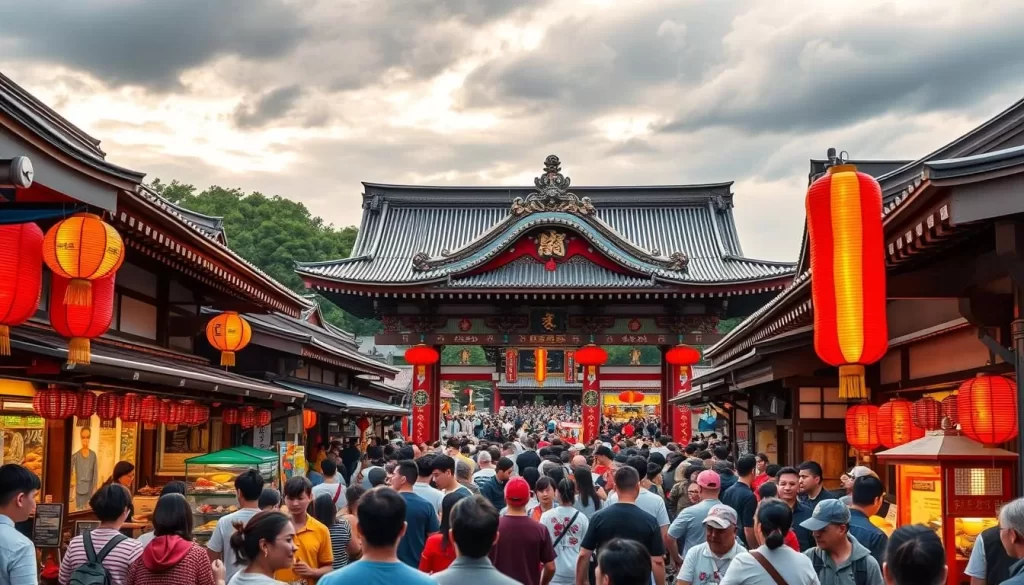
Izumo Taisha, a shrine steeped in history and spirituality, hosts several significant festivals throughout the year. Located in the Shimane Prefecture, this ancient shrine is one of Japan’s most revered sites.
The Kamiari Festival is the most spiritually important event, celebrating the gathering of all Shinto deities at Izumo Taisha during the tenth month of the lunar calendar. This transforms the area into Japan’s spiritual center.
Kamiari Festival: When the Gods Gather
The Kamiari Festival is a unique event where the shrine comes alive with special rituals and ceremonies. Visitors flock to the shrine to pray for good relationships and marriage, as the deities are believed to discuss human relationships during their stay. The streets around the shrine are filled with traditional decorations and food offerings, creating a charged atmosphere.
Night Kagura Performances: Dancing for the Gods

Shimane Prefecture is home to the captivating Night Kagura, a traditional dance theater that honors the gods under the cover of darkness. Night Kagura represents one of Shimane Prefecture’s most mesmerizing cultural traditions—a theatrical dance ritual performed as an offering to the gods.
These performances typically take place from early August through late September at various shrines throughout the region. The nighttime presentations create an otherworldly atmosphere enhanced by firelight and traditional music, making it a unique experience for visitors to the Shimane Prefecture.
The Cultural Significance
The Night Kagura performances are deeply rooted in the cultural and spiritual fabric of Shimane. They serve both as entertainment and as religious rituals, demonstrating the inseparable nature of art and spirituality in Japanese culture.
For those interested in experiencing the authentic culture of Shimane, Night Kagura offers one best cultural experiences available in Japan. The performances maintain their ritual purpose, giving you a genuine glimpse into living traditions that connect present-day communities with their ancestral past.
Tsuwano’s Obon Dance: A 400-Year Tradition
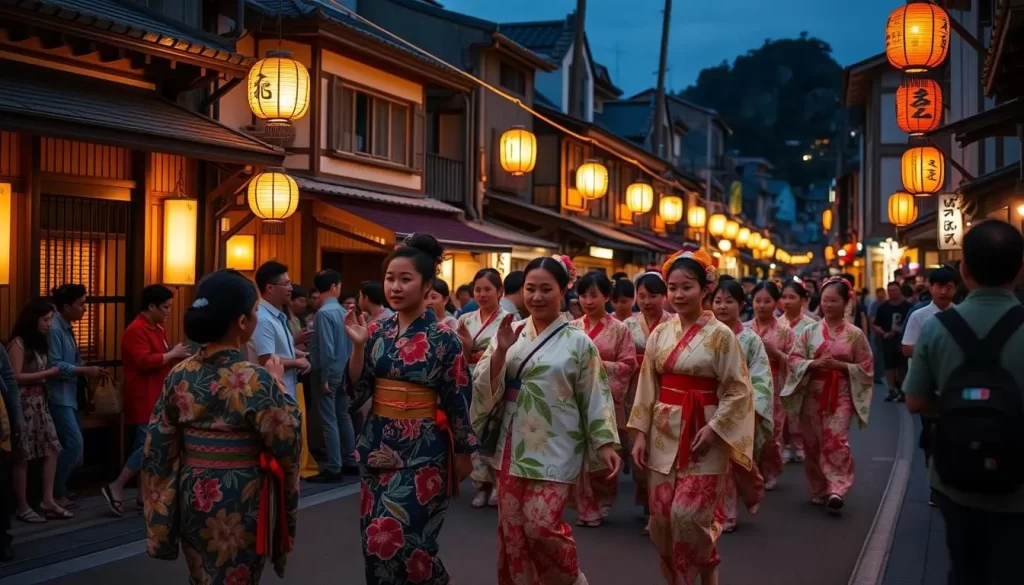
In the picturesque town of Tsuwano, a 400-year-old tradition continues to thrive through its annual Obon Dance festival. You can experience the vibrant culture of this Japanese city as participants dressed in traditional yukata come together to honor ancestral spirits.
The 21-Step Dance Ritual
The Obon Dance is characterized by a slow and deliberate 21-step sequence that requires concentration and precision from the participants. This distinctive dance has been preserved for centuries, offering a glimpse into the region’s rich history and cultural heritage.
As you watch the dance, you’ll notice the mesmerizing visual spectacle created by hundreds of participants moving in unison under the soft glow of lanterns. The atmosphere is enchanting, transporting you to another era.
Lake Shinji Fireworks Festivals
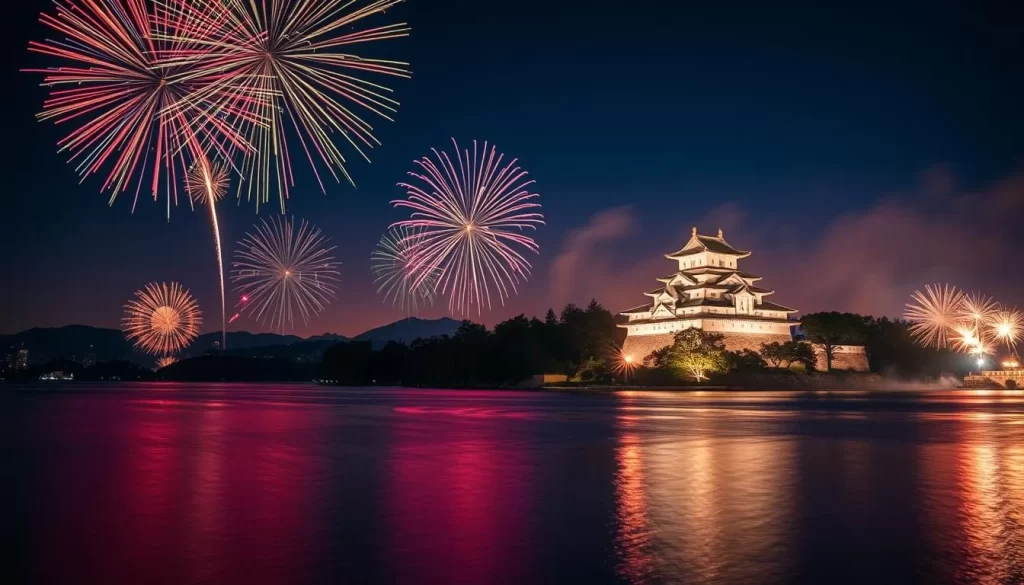
The picturesque Lake Shinji becomes the perfect backdrop for a series of dazzling fireworks festivals that light up the summer sky. These events are a hallmark of summer in Shimane Prefecture, attracting visitors to the area with their vibrant displays.
Summer Spectacles Over the Water
Lake Shinji, Japan’s seventh-largest lake, is transformed into a stunning spectacle during the summer months with its fireworks festivals. The most prominent event is the Matsue Water Fireworks Festival, typically held in late July or early August, featuring over 4,000 fireworks launched from barges on the lake.
The festivals blend natural beauty with cultural heritage, as the fireworks illuminate both the lake and the silhouette of nearby Matsue Castle, creating postcard-perfect scenes. The lakeside becomes a lively community area, filled with thousands of spectators enjoying traditional festival foods while claiming the best viewing spots.
These celebrations coincide with the peak tourist season, making them an ideal way to experience local festivities alongside Japanese families and travelers. The comfortable evening temperatures by the water add to the enjoyment of the day‘s events, making it a memorable experience.
Visitors can also explore other cultural and historical sites in the region, such as the Iwami Ginzan heritage site and the Oki Islands, enriching their travel experience. The Lake Shinji Fireworks Festivals are a testament to the rich cultural heritage and natural beauty of Shimane Prefecture.
Shimane Prefecture, Japan: Top Festivals to Check Out When Visiting Throughout the Seasons
As you plan your visit to Shimane Prefecture, you’ll discover a rich calendar of festivals that reflect the region’s deep cultural heritage. Shimane Prefecture is known for its unique traditional festivals, including Night Kagura and Tsuwano’s Obon Dance, which showcase the prefecture’s rich cultural heritage and spiritual significance.
Spring Celebrations
Spring brings a variety of celebrations centered around cherry blossoms and agricultural renewal. The Izumo Taisha Shrine hosts special spring equinox rituals that date back centuries, offering rare glimpses into ancient Shinto practices. You can also experience smaller local spring festivals throughout the prefecture, celebrating the planting season with traditional dances and music performances.
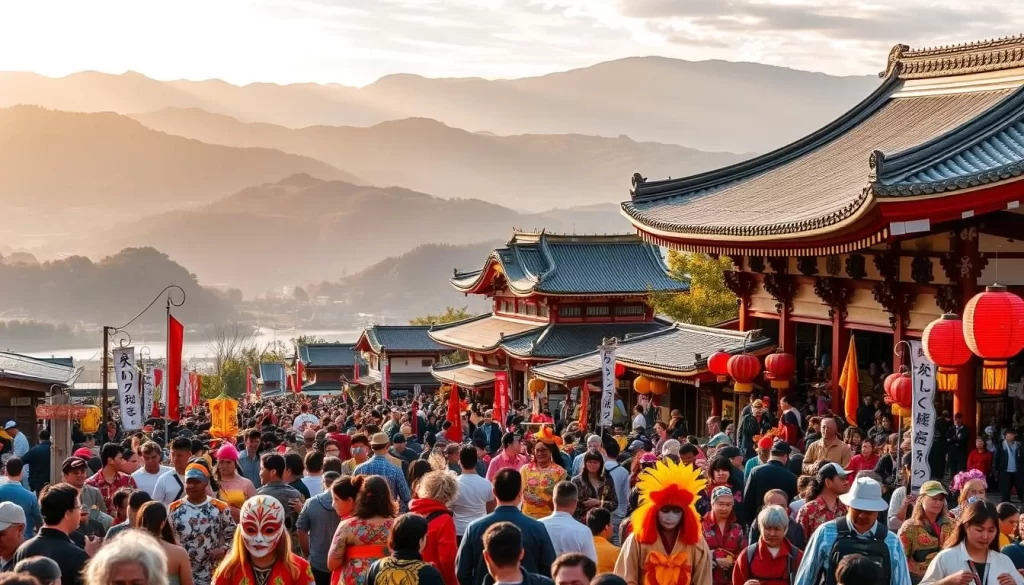
These spring festivals often incorporate elements of nature worship, reflecting the region’s agricultural heritage and deep connection to the seasonal cycles. You can enjoy tea-related celebrations that highlight Shimane’s significant tea culture, with special ceremonies showcasing the first harvest of the season.
Local Festivals in the Oki Islands
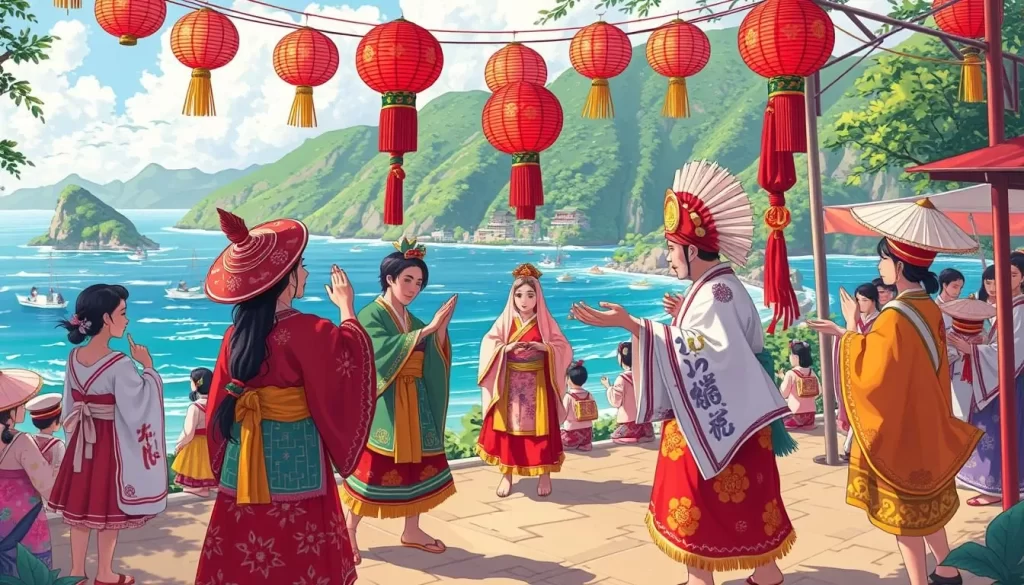
With its rich history and isolated location, the Oki Islands preserve some of Japan’s most genuine and untouched festivals. The remote islands, located off Shimane’s coast, are home to authentic celebrations that reflect their unique isolated history and island culture.
Traditional Island Celebrations
The Oki Islands’ festivals are characterized by their connection to the fishing industry and maritime heritage. You’ll discover boat processions, seafood offerings, and rituals praying for safe voyages and abundant catches that reflect the islanders’ deep connection to the surrounding sea.
Summer brings vibrant celebrations to the islands, including traditional dance performances and community gatherings that welcome visitors to participate. The smaller scale of these island festivals creates intimate cultural experiences where you can interact directly with locals.
Iwami Kagura: The Ancient Theatrical Dance
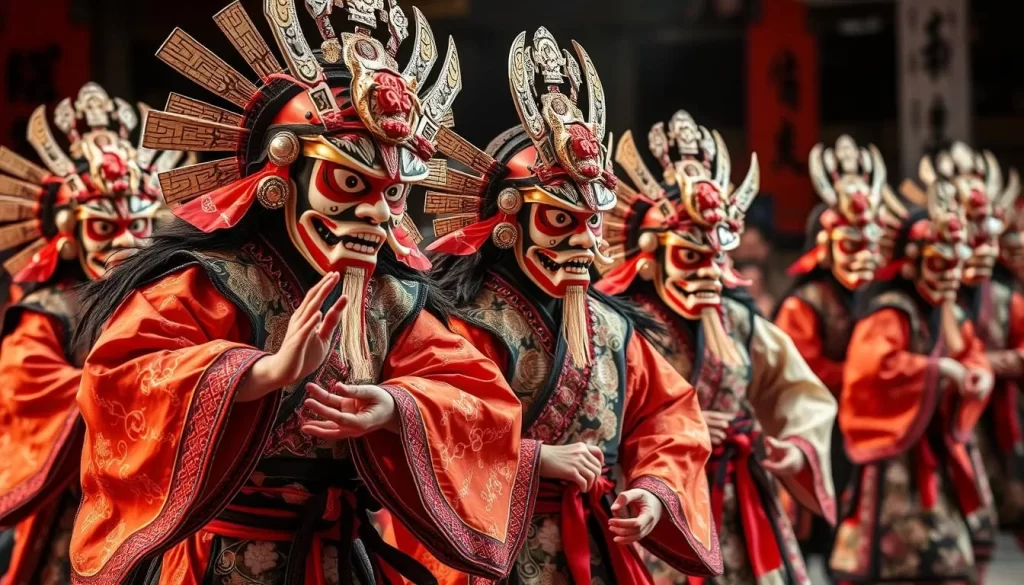
For a glimpse into Shimane’s rich cultural past, attend a performance of Iwami Kagura, a thousand-year-old traditional dance. Iwami Kagura represents one of Japan’s most dynamic and visually spectacular traditional performing arts, with a history stretching back over a thousand years in the Iwami region of Shimane.
History and Performance Style
This theatrical dance form differs from other regional Kagura styles through its bold, energetic movements, elaborate costumes, and distinctive masks that transform performers into gods and mythological beings. You’ll find Iwami Kagura performances telling stories from Japanese mythology, particularly tales of dragon slaying, deity conflicts, and the creation myths that form the foundation of Shinto beliefs.
The performances traditionally took place at shrines as religious rituals, but today they’re also held at dedicated theaters, community centers, and special events throughout the year, making them more accessible to visitors. What makes Iwami Kagura particularly special is its continuous evolution over years while maintaining its core traditions, with each local community developing slight variations in performance style, music, and costume design that reflect their unique interpretation of this ancient art form.
Visiting Matsue Castle and attending an Iwami Kagura performance can be a great way to experience the rich cultural heritage of Shimane Prefecture. Many of these performances are part of larger festivals, which are worth attending for the overall cultural experience. Additionally, the Ginzan Silver mine, a historical site, offers a glimpse into the region’s rich history beyond its cultural performances.
Food Festivals and Culinary Celebrations
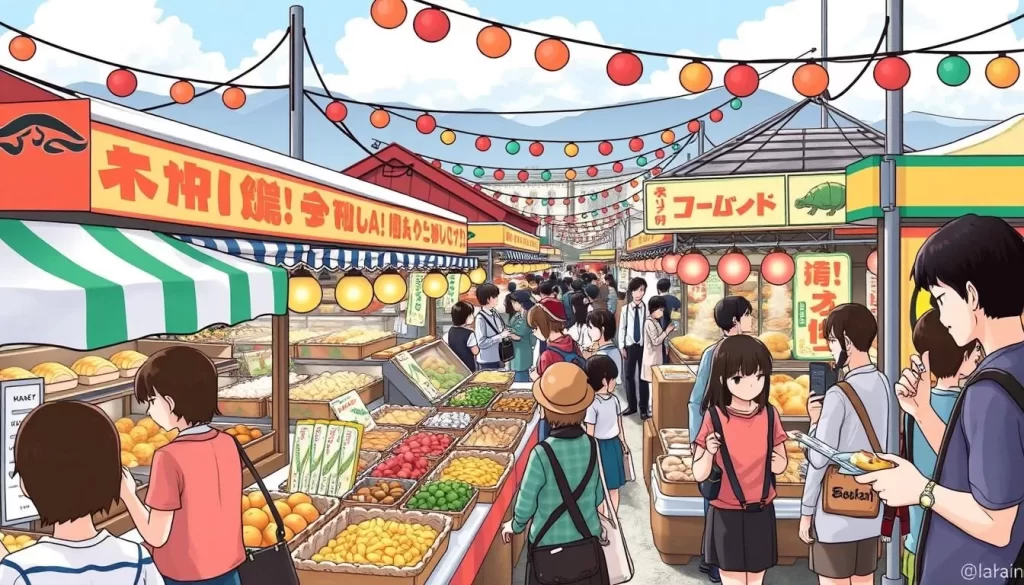
Experience the flavors of Shimane Prefecture at its many food festivals, which are an integral part of the local culture. These events celebrate the region’s rich culinary heritage, offering a taste of the diverse local ingredients and traditional dishes.
Izumo Soba Festivals
Izumo Soba, a beloved dish in Shimane Prefecture, is distinguished by its rich flavor and unique preparation method. Traditionally served in a three-tiered lacquerware called Warigo, Izumo Soba allows diners to enjoy various toppings and sauces.
- Shimane Prefecture celebrates its rich culinary heritage through various food festivals throughout the year, with Izumo Soba festivals being among the most popular and culturally significant.
- Izumo Soba, distinguished by its darker color and unique preparation using the entire buckwheat grain, is showcased during these festivals where you can watch master noodle makers demonstrate traditional techniques passed down through generations.
- These culinary celebrations often coincide with harvest seasons, particularly in summer and autumn, featuring cooking competitions, tasting events, and special limited-time dishes that highlight local ingredients.
- The festivals typically take place near Lake Shinji and other scenic locations, combining gastronomic experiences with cultural performances and activities that connect food traditions to the broader heritage of the region.
- Beyond soba, Shimane’s food festivals also celebrate the prefecture’s excellent seafood from the Sea of Japan, mountain vegetables from inland areas, and distinctive local sake, giving you a comprehensive taste of this region’s diverse food landscape.
By attending these festivals, you can immerse yourself in the local culture and enjoy the unique flavors that Shimane Prefecture has to offer. Whether you’re a food enthusiast or just looking to experience something new, Shimane’s food festivals are not to be missed.
Traditional Craft Festivals
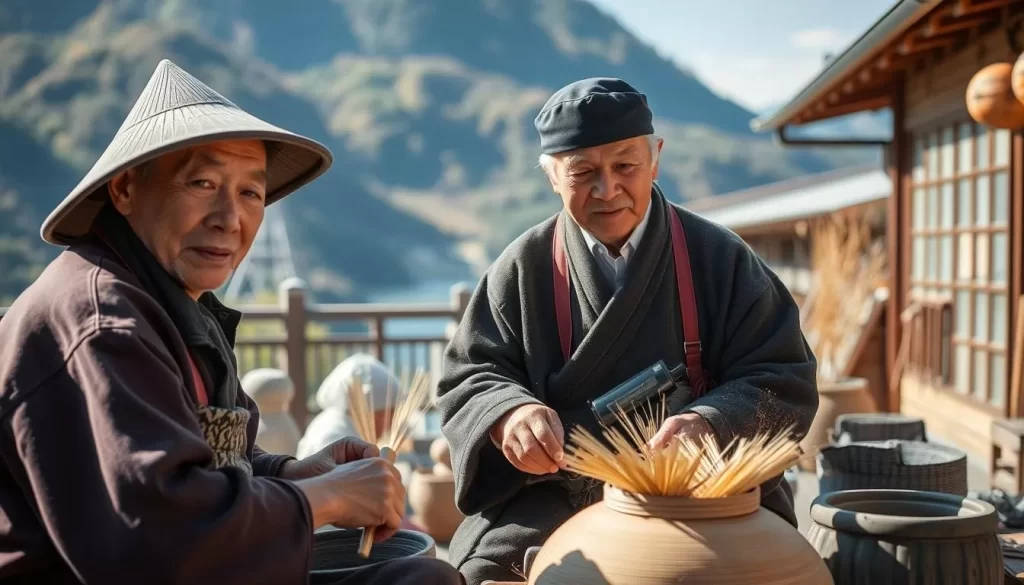
Shimane Prefecture’s traditional craft festivals are a testament to the region’s dedication to preserving its cultural traditions. These festivals celebrate the prefecture’s rich craft heritage.
Paper-Making Demonstrations
Traditional Japanese paper-making, or washi, is a significant part of Shimane’s craft heritage. Demonstrations during the festivals show the intricate process of creating this durable paper, a technique unchanged since the Heian period.
The prefecture’s craft heritage includes pottery, textile weaving, and metalwork, featured in seasonal festivals. You can experience these crafts in historic districts or near shrines, surrounded by traditional buildings and stone-paved streets.
Planning Your Festival Visit to Shimane
Shimane Prefecture is a hidden gem in Japan, with festivals that showcase its unique culture and traditions. Asvisitorsplan their trip, understanding the bestwayto reach Shimane is crucial. You can travel by limited express trains like the YAKUMO, highway buses, or drive there. Flying into Izumo Airport or Hagi-Iwami Airport is also an option.
Transportation Tips
To navigate thearea, consider renting a car for flexibility, especially for smaller towns. Public buses connect major sites, but services can be limited. The Limited Express YAKUMO train operates between Okayama and Izumo City, offering a convenient travel option. Plan yourdayaccording to the festival schedule, and stay hydrated during thesummerevents.
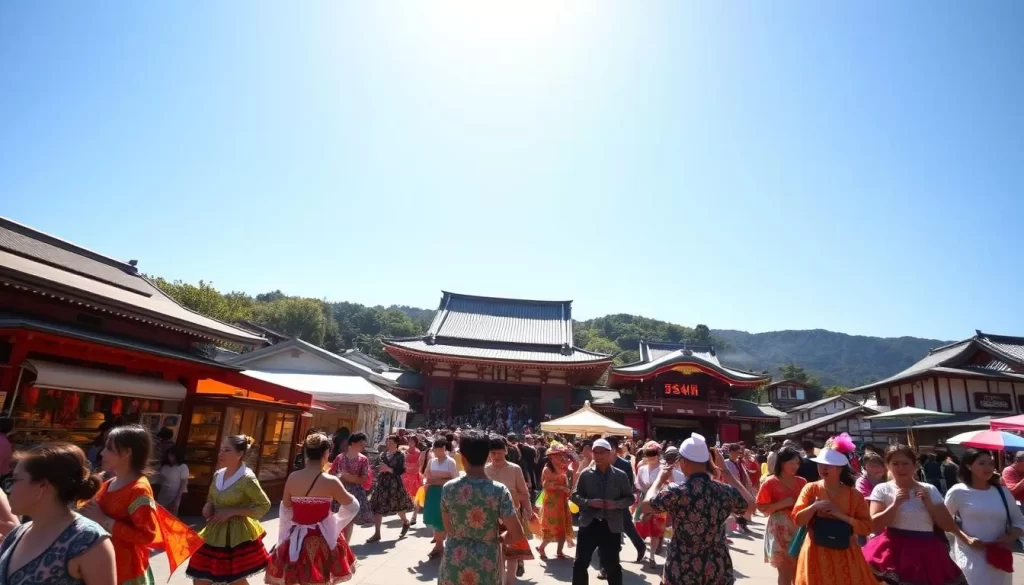
When visiting during major festivals, book your accommodations in advance, particularlytraditional Japaneseryokan inns, which offer cultural experiences. Enjoying a cup ofJapanese teais a great way to unwind after a day of festival hopping. Exploring Shimane’sheritage site, like the historic castle, is also a must. Consider visiting theOki Islandsfor a unique island experience. With proper planning, your visit to Shimane will be a memorable one,yearafter year.
Combining Festival Visits with Shimane’s Top Attractions
Your travel to Shimane Prefecture can be enriched by combining festival visits with explorations of its historical sites. Shimane is home to numerous cultural and historical landmarks that provide a deeper understanding of Japan’s heritage.
Historical Sites
The must-visit historical sites in Shimane include the Izumo Taisha Grand Shrine, Matsue Castle, and the Iwami Ginzan Silver Mine. These sites offer insights into Japan’s rich cultural and industrial heritage.
| Historical Site | Location | Significance |
|---|---|---|
| Izumo Taisha Grand Shrine | Izumo | One of Japan’s oldest shrines, dedicated to the god of marriage and fertility |
| Matsue Castle | Matsue | A well-preserved feudal castle that offers a glimpse into Japan’s samurai past |
| Iwami Ginzan Silver Mine | Oda | A UNESCO World Heritage site that played a crucial role in Japan’s industrial history |
By planning your itinerary around both festivals and major attractions, you can witness how contemporary celebrations connect to the region’s deep historical roots, creating a more meaningful travel experience.
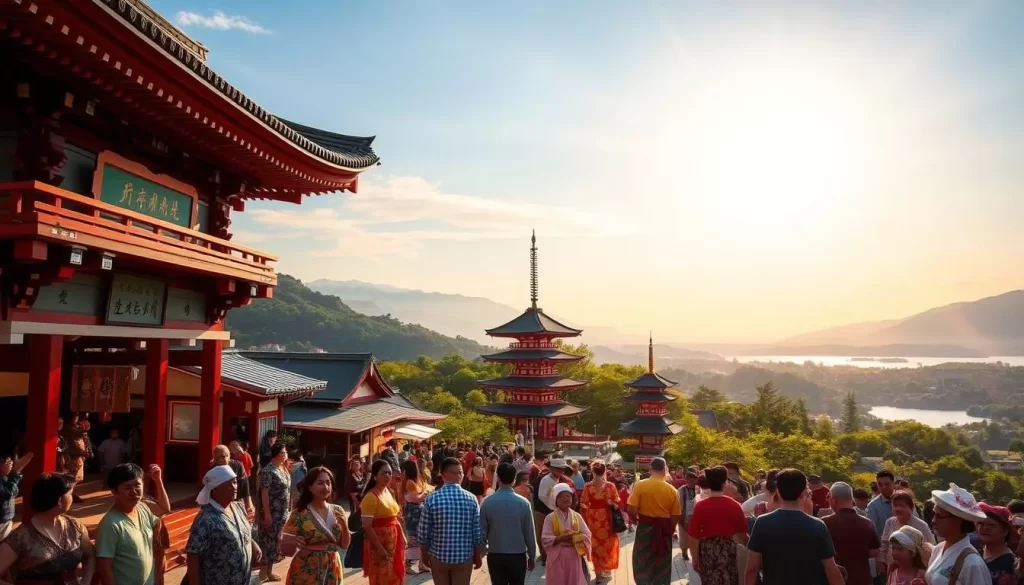
Conclusion: Experiencing the Heart of Japanese Culture in Shimane
Experience the heart of Japanese culture in Shimane Prefecture, where tradition meets natural beauty. As you explore this enchanting region, you’ll discover a unique blend of historical, cultural, and natural attractions that promise an unforgettable journey. From the spiritual significance of the Izumo Taisha Grand Shrine to the natural beauty of Lake Shinji, Shimane is a treasure trove of experiences waiting to be discovered.
By attending Shimane’s traditional festivals, you’ll gain deeper insights into Japanese values, aesthetics, and community bonds. The prefecture’s combination of preserved historical towns, such as those with streets lined with traditional architecture, and living cultural traditions creates an immersive environment where festivals feel authentic. You’ll return from Shimane with meaningful cultural experiences and personal connections, having visited a place that honors its deep historical roots while evolving its cultural heritage. Discover Shimane and let its charms leave an indelible mark on your heart.
The above is subject to change.
Check back often to TRAVEL.COM for the latest travel tips and deals.
